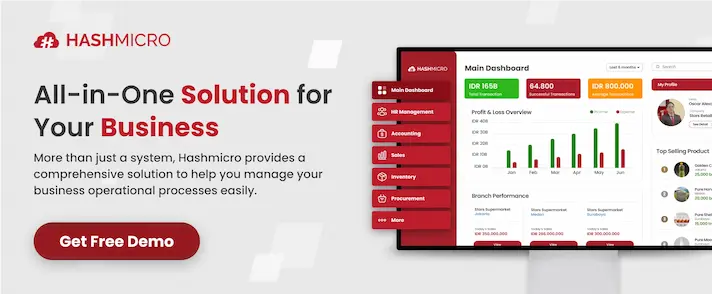Are you concerned about making the wrong investment in your organization’s development? With so many options available, it’s essential to understand the differences between Training Management Systems (TMS) and Learning Management Systems (LMS).
TMS primarily focuses on managing the logistics of training programs, such as scheduling, tracking attendance, and ensuring compliance.
In contrast, LMS is centered on delivering and managing educational content, shaping how employees learn and grow.
Understanding the nuances of LMS vs TMS is crucial for making informed choices. This article will explore TMS and LMS, how they function, their key differences, and vital tips for selecting the best training solution for your needs.
Key Takeaways
|
What is a Training Management System?
A Training Management System (TMS) is software designed to facilitate training program planning, tracking, and administration. It streamlines processes such as scheduling training sessions, managing resources, and tracking participant progress.
TMS typically includes features for reporting and analytics, allowing administrators to evaluate the effectiveness of training initiatives.
By centralizing training information, a TMS enhances communication between trainers, participants, and management, fostering a culture of continuous learning.
In addition, a TMS can integrate with other organizational systems, such as Human Resource Management Systems (HRMS), to streamline data flow and improve overall efficiency.
This integration enables a holistic view of employee development, making aligning training efforts with organizational goals and improving workforce capabilities easier.
What is a Learning Management System?
A Learning Management System (LMS) is a technology platform that delivers, tracks and manages educational courses and training programs. It serves as a centralized hub for e-learning, providing users access to various resources, such as videos, quizzes, and interactive content.
One of the primary benefits of an LMS is its ability to offer personalized learning experiences. Users can progress at their own pace, access materials on-demand, and revisit content as needed.
Additionally, LMS platforms often include assessment tools to evaluate learner performance, allowing instructors to adapt their teaching strategies based on real-time data and analytics.
This aspect is particularly beneficial when comparing training management systems vs learning management systems, as it highlights the personalized nature of LMS platforms.
LMS platforms also support collaboration and communication among learners and instructors through forums, messaging, and discussion boards.
Differences Between TMS and LMS

Training Management Systems (TMS) and Learning Management Systems (LMS) are software solutions for managing training and learning activities.
However, they serve different purposes and have distinct features.
This table compares the key differences between TMS and LMS, including their users, functionalities, assessment tools, cost structures, mobile accessibility, and integration capabilities.
| Aspect | Training Management System | Learning Management System |
|---|---|---|
| Users | Corporate trainers, HR professionals, and management | Educators, students, e-learning professionals |
| Functionality | Scheduling, registration, attendance tracking, and reporting for training sessions | Content creation, learner engagement, progress tracking |
| Assessment Tools | Limited (attendance, compliance) | Varied (quizzes, certifications) |
| Cost Structure | Often, subscription-based or per-training session fees | Subscription-based, related to course creation and user licenses |
| Mobile Accessibility | Limited mobile access; often designed for desktop use | Strong support for accessing courses anytime, anywhere |
| Integration | With HR systems, payroll, and other corporate tools | With various educational platforms |
In summary, while TMS and LMS aim to improve training and learning experiences, they have different focuses.
TMS is primarily designed to manage training programs’ administrative and logistical aspects, while LMS is centred on delivering and tracking learning content.
How to Choose the Right System?
Selecting the right system for your organization’s training and learning needs can significantly impact your effectiveness and efficiency.
The two main options are a Training Management System (TMS) and a Learning Management System (LMS).
Each serves different purposes and offers unique features. Here’s a guide to help you decide which is best for you.
1. User experience

The system should be easy to use for both trainers and learners. A simple interface helps everyone navigate easily, leading to better engagement and less frustration.
2. Scalability
Look for a system that can grow with your organization. As your training needs increase—whether in users, content, or features—the system should be able to adapt without requiring a complete change.
3. Integration capabilities
The TMS or LMS should work well with your current software and tools, like HR systems or content creation platforms. Good integration makes processes smoother and reduces data silos.
4. Reporting and analytics
Strong reporting features are vital for tracking learner progress and measuring training effectiveness.
Analytics help you see what’s working and what needs improvement.
5. Mobile compatibility
A mobile-friendly platform is essential for learners who need flexibility. Mobile access allows users to engage with training materials anytime and anywhere, which boosts participation and retention.
6. Customer support
Check how good the customer support is. Reliable support ensures you can quickly solve issues, get help during setup, and receive assistance whenever necessary.
7. Security and compliance
The system should have strong security features to protect sensitive data and ensure compliance with regulations like GDPR or HIPAA.
Good security helps maintain trust and keeps your organization’s information safe.
Conclusion
In summary, a Training Management System (TMS) focuses on the administrative aspects of training, while a Learning Management System (LMS) emphasizes delivering and tracking learning content.
Hashmicro School Management System offers a comprehensive solution for educational institutions to streamline administrative tasks, improve communication, and enhance student engagement.
Ready to see how it works? Sign up for a free demo today and discover the benefits for your organization!

FAQ
-
What key features should I look for in a TMS and LMS?
Look for user-friendly interfaces, robust reporting capabilities, integration options, mobile accessibility, and support for various learning formats like e-learning and in-person training.
-
How do TMS and LMS support employee development?
TMS organizes training to meet goals, and LMS provides access to learning resources, enabling personalized skill development.
-
Can TMS and LMS be integrated?
Yes, integration allows for better data sharing and reporting, enhancing learner engagement and streamlining employee development.














